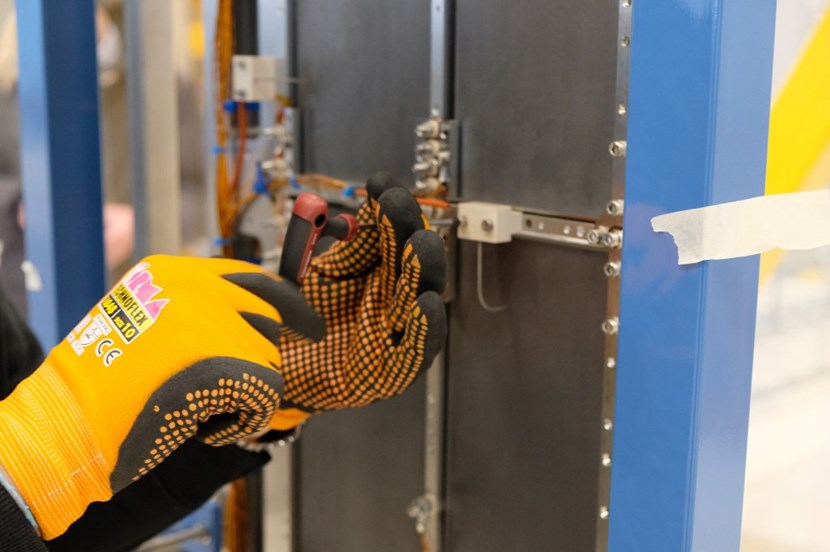ITER NEWSLINE
-
Neutral beam diagnostics
Right in the line of the beam
Pierluigi Veltri, ITER Neutral Beam Section
Neutral beam diagnostics | Right in the line of the beam
A high-precision diagnostic is about to enter into service at the ITER Neutral Beam Test Facility, where scientists are testing key aspects of ITER's external heating powerhouse—neutral beam injection.

Sixteen carbon fibre composite tiles are being mounted on the STRIKE structure. These tiles will face the brunt of the SPIDER negative ion beam ... for short periods of time ... to characterize beam uniformity and divergence.
Last-phase assembly activities are underway on the STRIKE calorimeter at the ITER
Neutral Beam Test Facility, as carbon tiles are installed on the supporting structure. STRIKE will be used on the first of the facility's test beds SPIDER, an ITER-scale negative ion source inaugurated
last June.
STRIKE is the most remarkable diagnostic planned for the
SPIDER beam—the only one able to measure beam uniformity and divergence at the same time. The principle is quite simple: the calorimeter will present a perpendicular surface made of carbon fibre composite (CFC) tiles to the beam. The power deposited by the beam on the front side of the tiles will be propagated in form of heat to the rear side, where a set of infrared cameras will detect and analyze the thermal pattern in order to reconstruct beam properties.

A CAD representation of the rear side of the STRIKE calorimeter, installed inside the SPIDER vessel perpendicular to the beam. In orange, the view cones of infrared cameras.
In order to preserve the pattern all the way through the calorimeter, it is fundamental to minimize the heat conduction along the directions perpendicular to the beam axis, while maintaining parallel conduction. For this reason, the tiles are made of carbon fibres that are packed and oriented in the direction parallel to the beam. Fabrication requires several months and is only possible in few locations around the world.
To fully intercept the SPIDER beam—which occupies approximately one square metre—16 carbon fibre composite tiles are needed. The tiles are kept in place by a metallic structure whose position can be remotely controlled in order to diagnose the beam at different distances from the source. The structure is also equipped with electrostatic sensors and thermocouples to provide additional information.
Even if the tiles are capable of sustaining temperatures in excess of 1,000 ˚C, they cannot withstand the full power (up to 6 MW) of the SPIDER beam for long periods; hence, for long pulses, the metallic structure of STRIKE opens to allow the beam to pass through and be intercepted further along by an alternative calorimeter, the actively cooled "beam dump."
Thanks to this high-tech instrument, scientists will be able to perform precision analysis on the SPIDER beam.
return to the latest published articles








